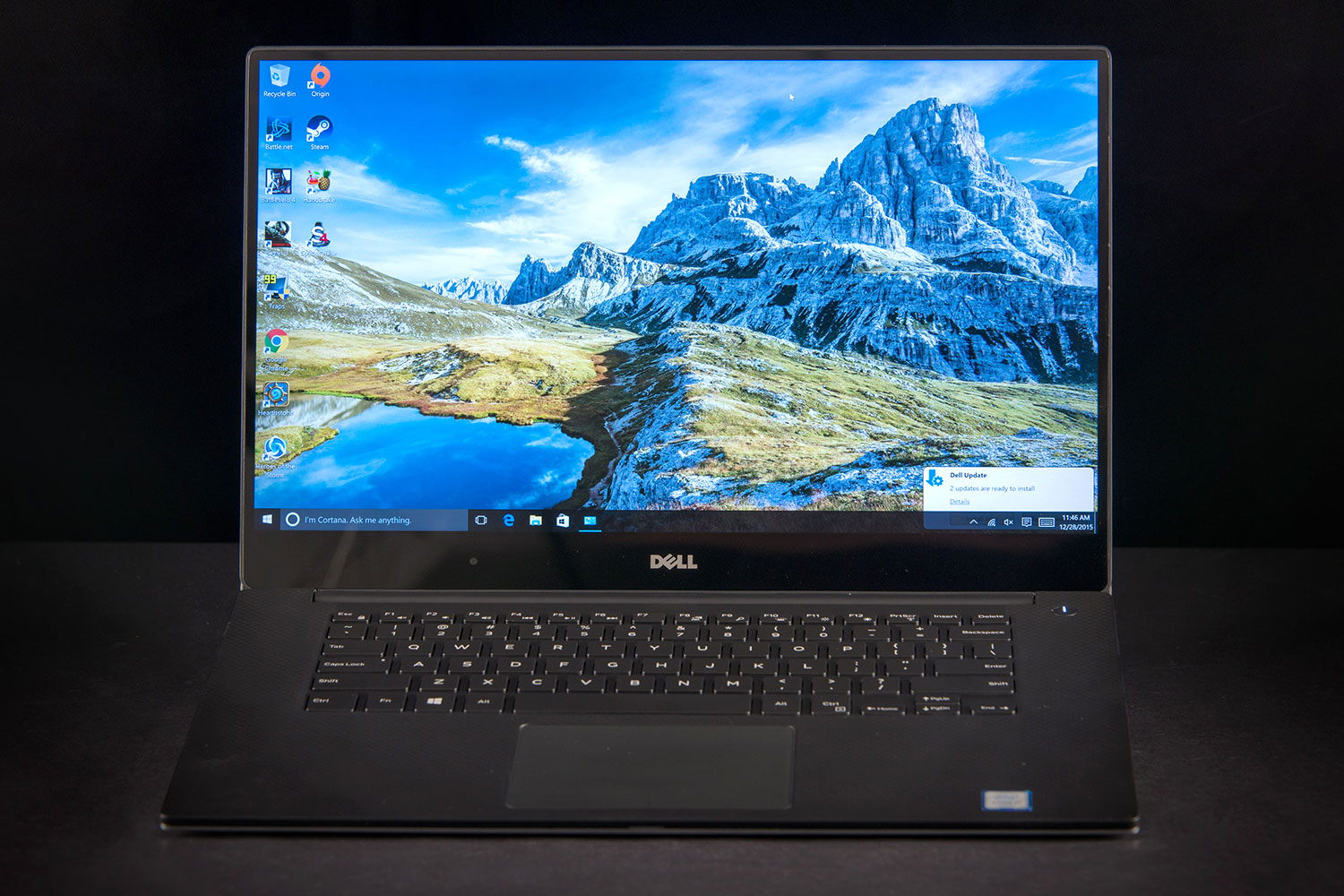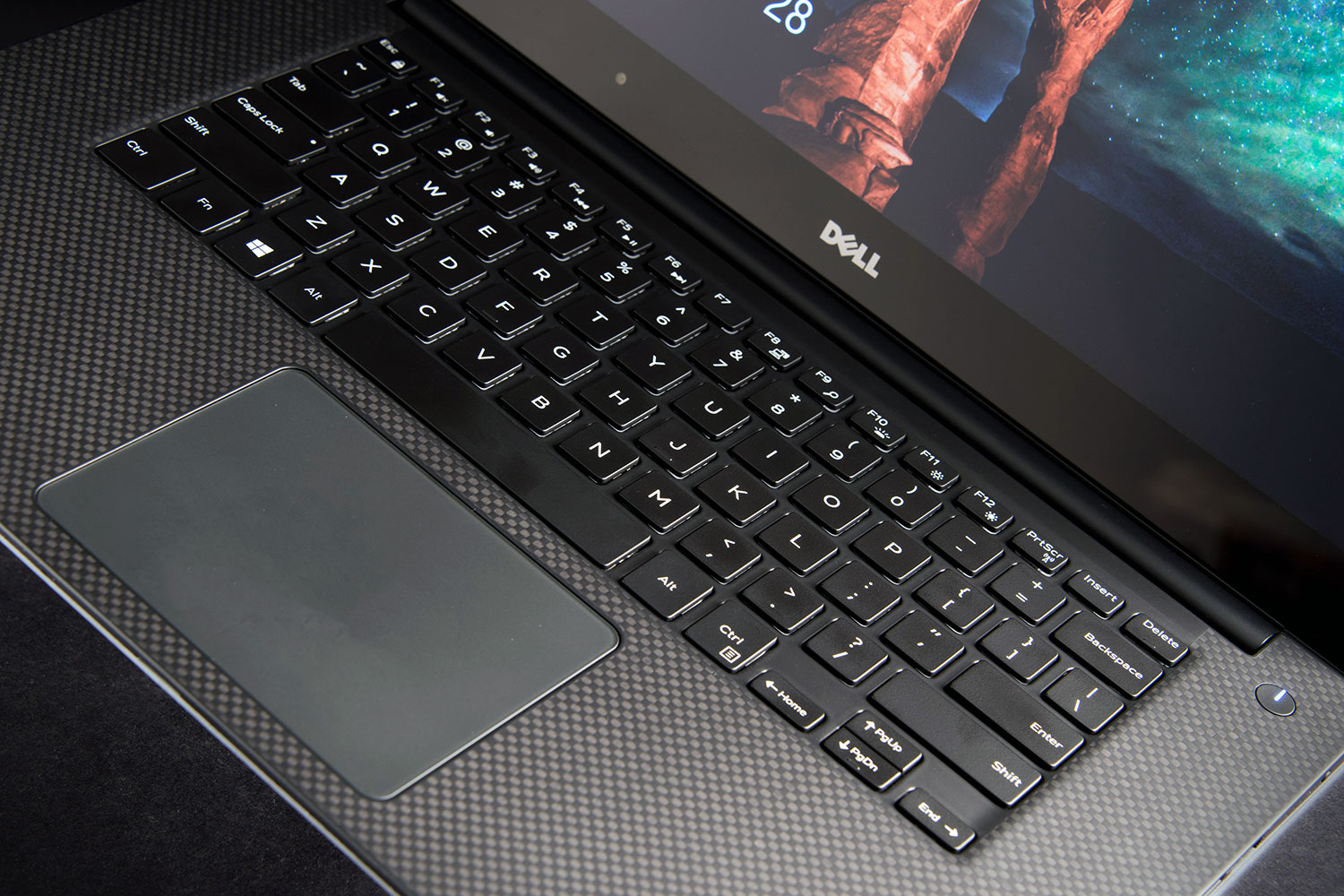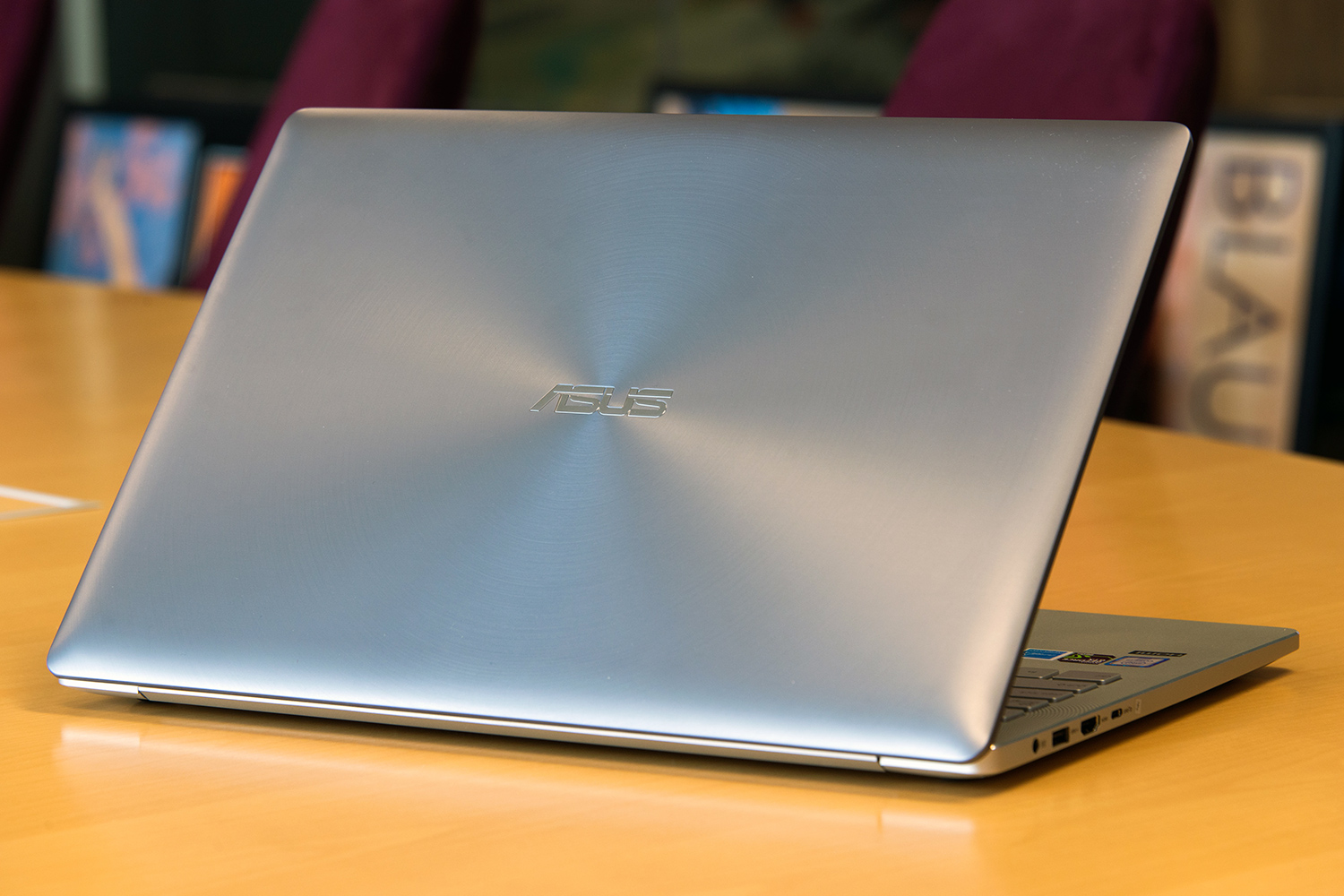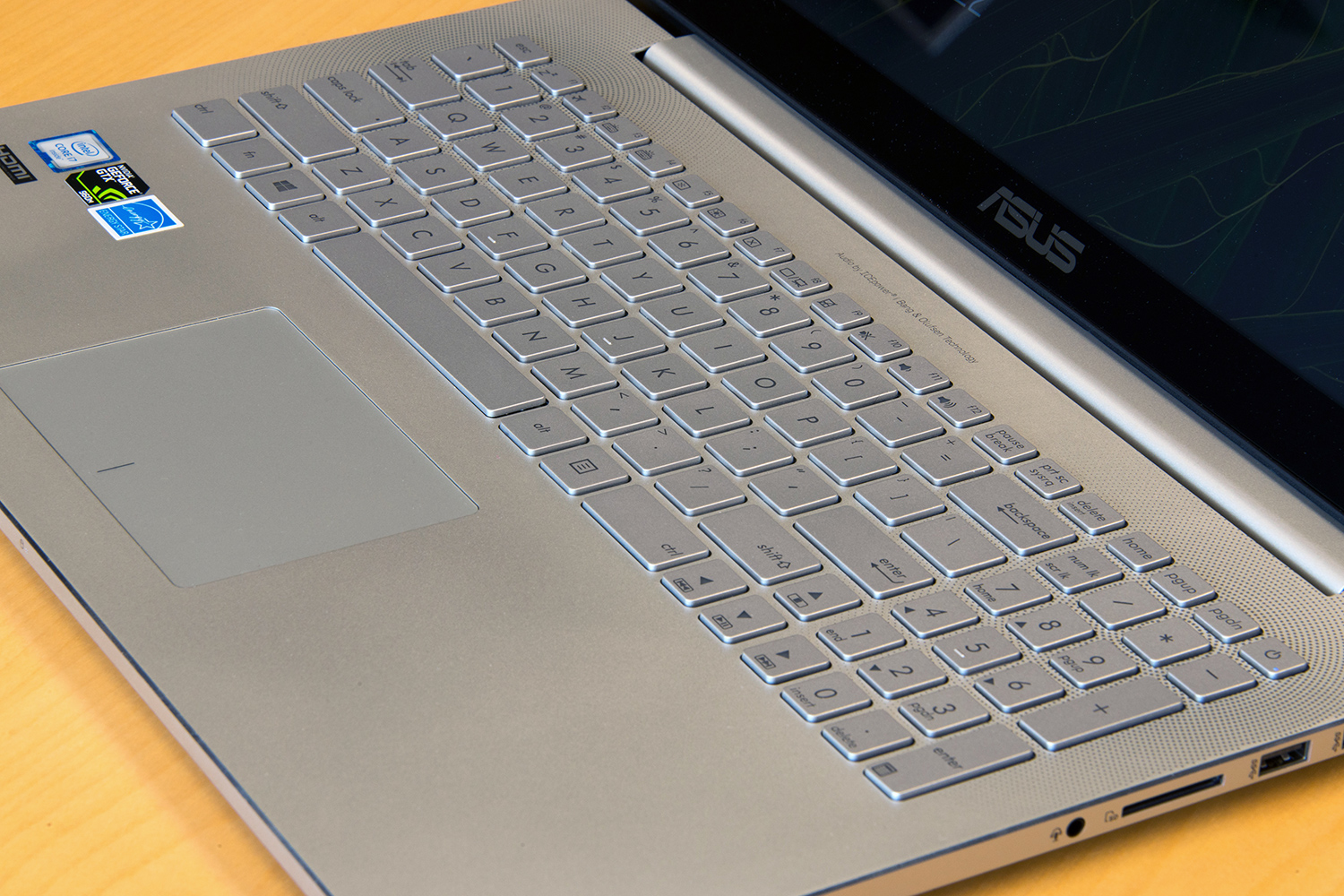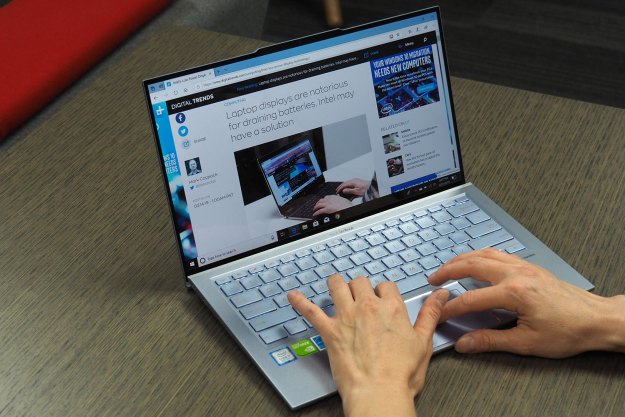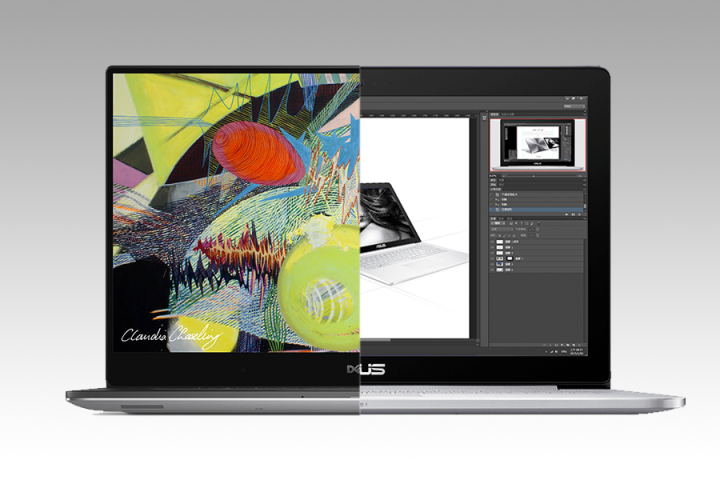
So which one should you buy? The XPS series has been on a hot streak lately, and the XPS 15 inherits the movie star looks and premium materials of its 13-inch brother. But the Zenbook is also rocking premium heritage, complete with a full-metal body and some very high-end hardware. Let’s take a deep look at the strengths and weaknesses of both machines.
| ZenBook Pro UX501
|
Dell XPS 15 (2015)
|
|
| Dimensions | 15.1 x 10.0 x 0.8 (in) | 14.06 x 9.27 x 0.45-0.66 (in) |
| Weight | 5.0 pounds | 3.9 pounds |
| Keyboard | Full size (with tenkey) backlit keyboard | Full size backlit keyboard |
| Processor | Intel Core i7-6700HQ (6M Cache, up to 3.5 GHz) | Core i3-6100H base, up to Core i7 6700HQ |
| RAM | 16GB of 2133MHz DDR4 | 8/16/32GB of 2133MHz DDR4 |
| Graphics | GeForce GTX960M (2GB) | Intel HD Graphics 530 or GeForce GTX960M (2GB) |
| Display | 15.6-inch LED-backlit display with IPS technology | 15.6-inch LED-backlit display with IPS technology |
| Resolution | 3,840 x 2,160 touchscreen | 1,920 x 1,080 non-touch or 3,840 x 2,160 touchscreen |
| Storage | 512GB SSD | 500GB/1TB HDD or 256GB/512GB/1TB SSD |
| Networking | 802.11ac, Bluetooth 4.0 | 802.11ac, Bluetooth 4.1 |
| Ports | USB 3.0 (3), USB Type-C/Thunderbolt, SDXC card reader, HDMI | USB 3.0 (2), USB Type-C/Thunderbolt, SDXC card reader, HDMI |
| Webcam | 1.2 megapixels | 720p |
| Operating System | Windows 10 | Windows 10/Windows 10 Pro |
| Battery | 96-watt-hour | 84-watt-hour |
| Price | $1500 | $1000 to $2650 |
| Availability | Buy Now | Buy Now |
| Review | 3.5 out of 5 | 4 out of 5 |
Specifications
The XPS 15 is offered at no less than eight different price points on Dell’s website, ranging from $1000 to over $2,500. The processor, RAM, and SSD options change considerably with price. Asus’ system is offered in North American at just once price point, $1,500, in one configuration, shown in the table above.
The entry model gets a humble Core i3-6100H processor. At the $1,400-1,500 level that matches the Zenbook Pro UX501 price, the Dell is equipped with the same Core i7-6700HQ as the Asus laptop, making them roughly equal. The Dell can be configured with 8GB of DDR4 RAM all the way to a whopping 32GB, but to match the Zenbook it needs to be upgraded to the $1,780 model.
Likewise, storage options begin with a pedestrian 500GB hard drive, but the $1780 version is the cheapest that matches the Zenbook’s 512GB SSD. The most expensive models offer a 1TB SSD. Notably, the Dell can be opened for RAM and hard drive upgrades, but the Asus cannot.
Most models of both laptops come with an NVIDIA GeForce GTX 960M mobile graphics cards, one of the best on the market, and more than enough to handle most modern PC games at middle graphics settings. It might not have enough oomph to power through high-end games at 4K resolution, but it’s more than enough to add some gaming capability to an all-round design. It’s also a nice extra for anyone dealing with media-heavy apps like Adobe’s Creative Suite. The cheapest model of the XPS 15 has to cut corners with an integrated Intel HD Graphics 530 chip, which is only good for the lightest of games.
Just like the internals, the screen of the XPS 15 is somewhat mutable along with its price. The $1,000 base model is equipped with a 1,920 x 1,080 non-touch IPS screen, which should be enough to handle basic office and web tasks. Upgrading to the 4K screen also gets you a touchscreen, just like the
Speaking of batteries: — the Dell uses a relatively beefy 84 watt-hour battery, but the Asus beats it with a 96 watt-hour version, probably thanks to its larger dimensions. Based on our benchmark tests, the Zenbook will last longer than the XPS 15 in the same tasks, by a factor of 20-30 percent.
Both laptops have a generous selection of ports, including USB 3.0, USB Type C/Thunderbolt, full-sized HDMI, and SD card slots. The only major difference is that the larger Zenbook includes three standard USB ports to the XPS 15’s two, and the XPS 15 uses its Type C port as a power input, so users can’t use it for a non-powered external display while charging.
Winner: Dell XPS 13
Design
The XPS 15 benefits from the widely-acclaimed design of the XPS 13. It’s virtually identical, albeit in a larger footprint — machined aluminum on the top and bottom, carbon fiber for the keyboard deck, and a glass “InfinityEdge” screen with the thinnest bezels in town. It’s undeniably appealing, and perhaps even more valuable on the larger model — the XPS 15 has a much smaller footprint than the Zenbook Pro while being a mere .06 inches thinner. It’s also considerably lighter, at 3.9 pounds versus five.
That said, the Dell doesn’t have it all its own way. Asus’ all-metal design is far from homely, and the extra space allows for some more conventional features, like a top-mounted webcam that avoids the awkward angles of the XPS camera. It’s also wide enough to accommodate a ten-key area on the chicklet keyboard, which is a huge plus for dedicated data entry workers (even if the squashed right shift key is not to my liking).
Both keyboards are backlit, both touchpads are large and accurate, and both laptops are equipped with Bluetooth for pairing a mouse without occupying a USB port. Both feature serviceable if not outstanding down-firing speakers. The Dell comes ahead on portability and looks, and unless you absolutely need that 10-key keyboard or a third USB port, it’s an easy winner in this category.
Winner: Dell XPS 13
Availability and price
The Zenbook Pro UX501 comes in just one hardware configuration. $1,500 gets you the 4K touchscreen, Core i7 processor, 16GB of RAM, a 512GB SSD drive, a GTX 960M graphics card, and Windows 10. That’s an excellent price for that hardware, and the design of the laptop is no slouch either.
The XPS 15 starts at $1000 for a functional but decidedly low-end configuration, with the 1080p non-touch screen, a Core i3, 8GB of RAM, a 500GB conventional hard drive, integrated Intel graphics, and Windows 10. To match the specs of the Zenbook above you have to spend over $2,100 at the Dell store. For the same $1,500 price, customers will have to settle for a slower processor, smaller SSD drive, lower-res screen, integrated graphics, or a combination thereof.
The Zenbook’s price advantage at comparable steps is considerable, but Dell’s flexibility shouldn’t be discounted. Its more premium design will be worth the extra price for a number of users, and a 1080p, non-touch screen is something Asus really should have offered for the battery savings alone, game performance and Windows scaling notwithstanding.
Winner: ZenBook Pro UX501
Dell’s XPS 15 is the better notebook
The XPS 15 can be had for less than the Zenbook Pro, and it’s much more expensive at the same configuration. But the old adage holds true here. You get what you pay for. The Dell’s fresh design, smaller footprint, lower weight, and more premium hardware options make it a winner in a head-to-head comparison, especially since both companies are courting “premium” buyers (at any price). The Dell’s options for user RAM and storage upgrades somewhat mitigate its price disadvantage.
That said, the Zenbook Pro has an undeniable edge in value (assuming you want all of its high-end hardware), and it also beats the XPS 15 in battery life. The ten-key keyboard is a plus for a considerable number of workers, too. Even if the Zenbook Pro is not in the same class as the XPS 15, frugal notebook buyers wouldn’t be wrong for choosing its combination of hardware and longevity.
Editors' Recommendations
- The Dell XPS 15 has one major advantage over the MacBook Pro
- Dell XPS 15 vs. Razer Blade 15: which to buy in 2022
- Asus ZenBook 13 OLED vs. Dell XPS 13
- Microsoft Surface Pro 7 vs. Dell XPS 13
- Dell Inspiron 15 7000 vs. Dell XPS 15




